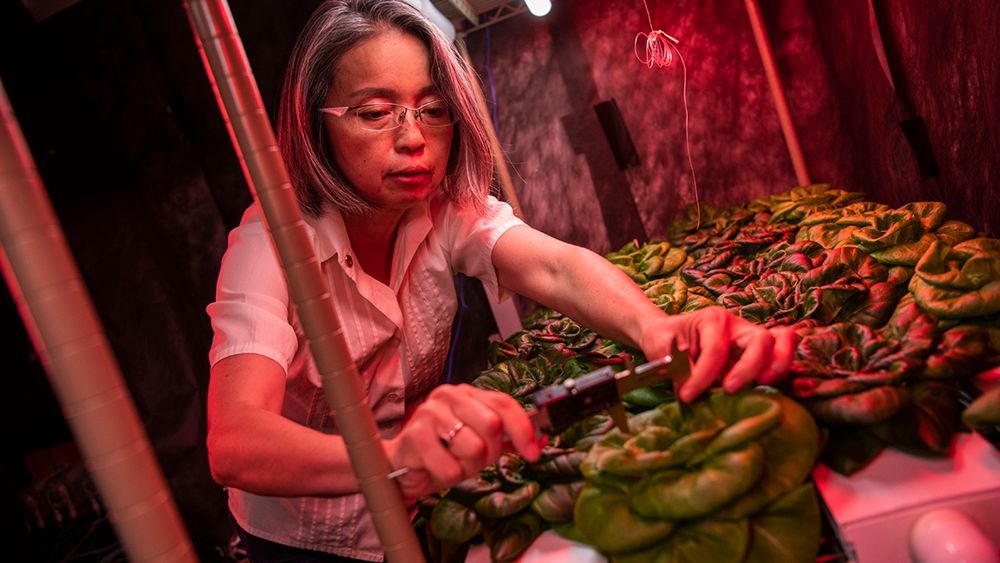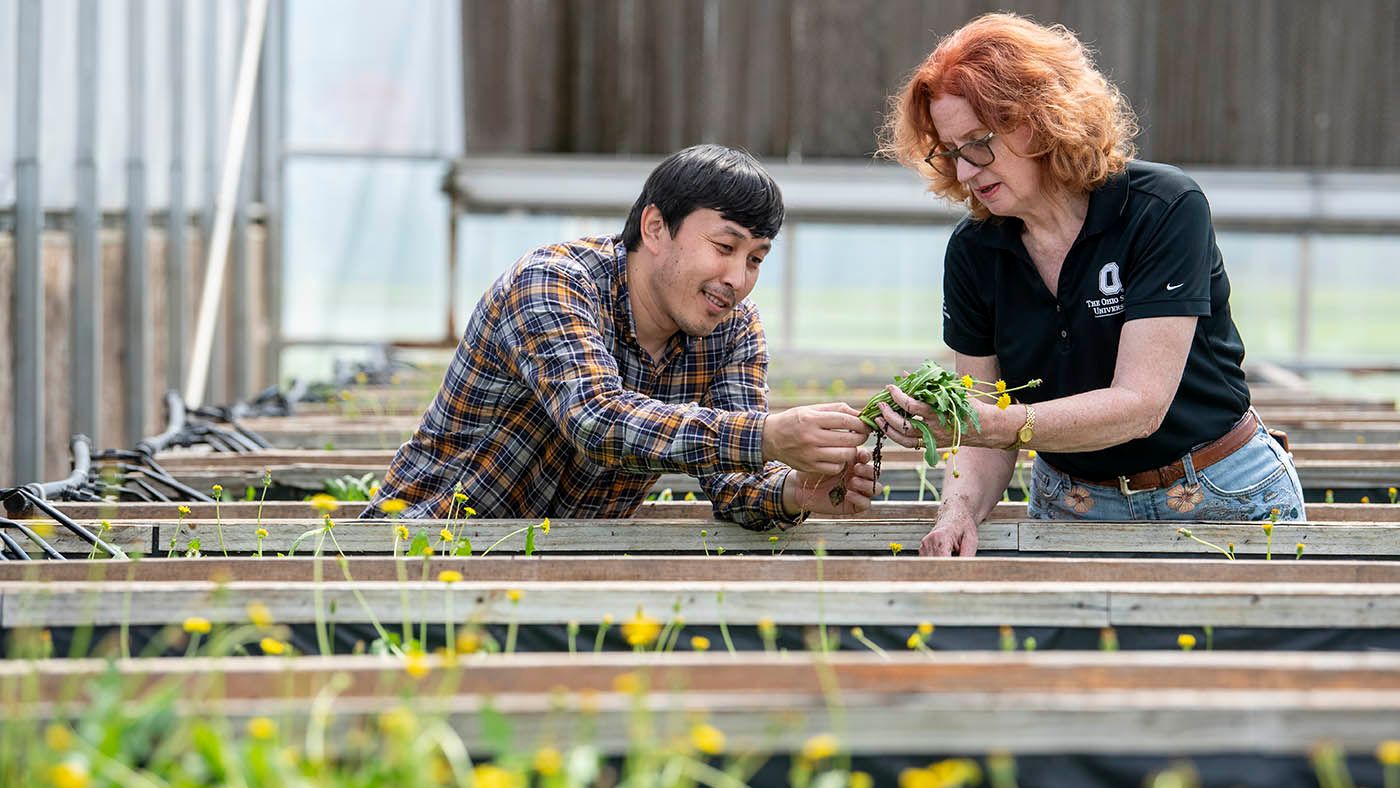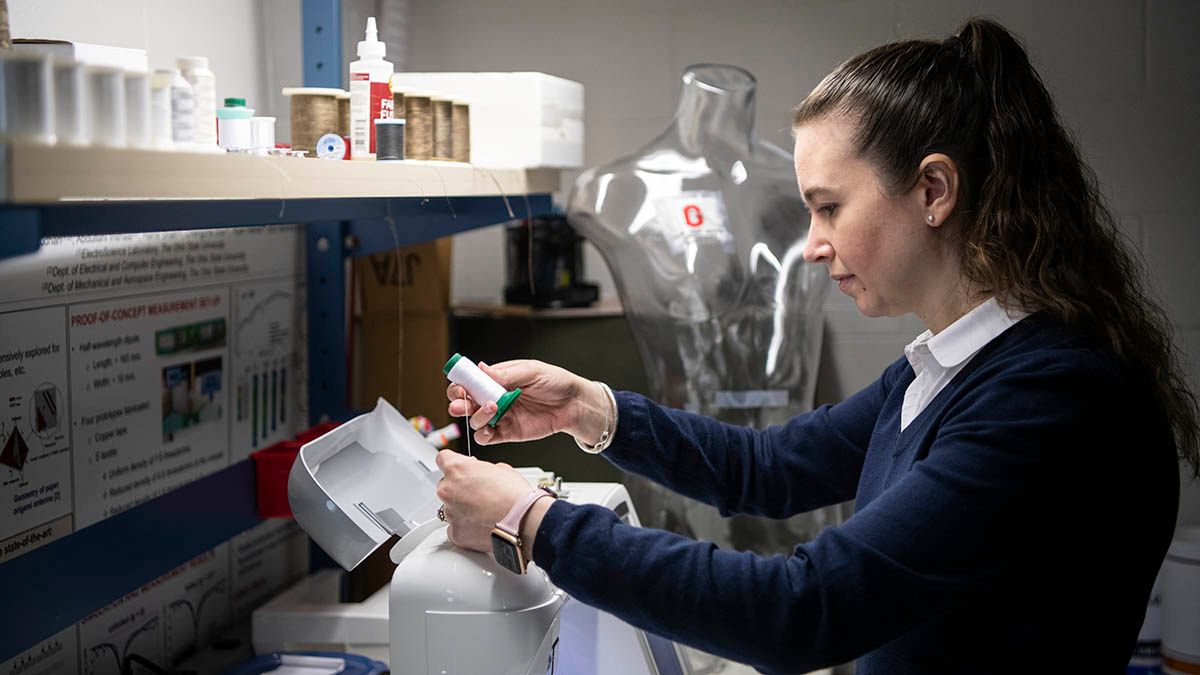If Chieri Kubota has anything to say about it, every bag of lettuce you buy will be green and fresh like you picked it yourself. Your strawberries always will be ripe and red. Tomatoes picked from the vine today will be in your store tomorrow.
That’s because her expertise in controlled environment agriculture is helping indoor farms blossom in Ohio and across the United States.
“How can I help make production more efficient, more profitable, more friendly to the environment?” says Kubota, a professor of controlled environment agriculture in the Department of Horticulture and Crop Science. “Can we go further? I’m always pushing the edge because I have a skill set and I want to be helpful.”
It’s research that results in locally grown tomatoes, lettuce, cucumbers and even strawberries — any season, anywhere. It also means more jobs, fewer food deserts in larger cities, and more sustainable agriculture in a variety of ways, such as significantly less water usage and chemicals used in production.
And it’s catching on throughout the country.
When Kubota arrived from Japan in 2002, 99% of the United States’ fruits and vegetables were grown in California or Florida and shipped across the nation. In the years since, her research of controlled environment agriculture has fueled a flourishing indoor farming industry.
According to the USDA, there was a 132% increase in greenhouse production for vegetables and herbs from 2012 to 2017 in the United States. The state with the largest growth? Ohio, at 292%.
“Many growers in Europe and Asia were using hydroponic, or soilless, vegetable production when I came here. But the United States was far behind,” Kubota says. “I wanted to help close that gap.”
She’s done that on the academic side — publishing hundreds of papers and giving her students the engineering and horticulture skills the rising industry desperately wants — and by directly supporting indoor farmers.
“She’s highly recognized nationally and internationally,” says Jim Metzger, professor emeritus of Horticulture and Crop Science at Ohio State, who helped recruit Kubota to the university in 2017. “People seek her out, whether it’s citing her in academic publications or companies sending employees to her workshops.”

Kubota’s online “Indoor Ag Science Café” series of instructional webinars has more than 1,300 participants. Recently, she also spearheaded an effort to create a research collaborative called the Ohio Controlled Environment Agriculture Center (OHCEAC), a consortium of Ohio State faculty and USDA research scientists. It’s the largest group of researchers focused on controlled environment agriculture in North America.
She also helped create another research consortium that combines OHCEAC members with industry professionals to foster collaboration in tackling problems and finding innovations.
“If I see something in the industry that is limiting or problematic, I really work on that because I want my research to contribute in a major way,” Kubota says. “I don’t need awards; I don’t need the spotlight. The best compliment I can get is when someone says I’ve been helpful. That’s the best, that’s my motivation.”
Controlling the environment
Optimizing controlled environment agriculture takes expertise in both horticulture and greenhouse engineering, a combination in which Kubota excels and teaches to both her students and those in the indoor farming industry.
“She’s an incredible resource,” says Octavio Perez Rodriguez, director of growing operations at Nature Fresh Farms in Delta, Ohio. “She’s doing research that can be directly applied to greenhouses in a commercial way. She has a different way of seeing things and that’s incredibly important to us. On the commercial side, we sometimes don’t have the freedom to do research or make mistakes, so her work is incredibly important to us.”
Rodriguez says Kubota’s courses and one-on-one support have given him insight into everything from pest management to strawberry production to LED lighting and climate control. It’s knowledge that will be critical in helping Nature Fresh Farms begin an expansion later this year.
“It’s very interesting to see what she does with her trials and what we can apply to make our system more productive,” Rodriguez says. “She’s always very honest with us. The fact we can connect with a specialist who always makes time is incredibly beneficial to what we’re doing.”
And Kubota’s own research continues to expand. She’s begun to delve into using artificial intelligence for autonomous greenhouses and has even begun to explore space agriculture.
“The great thing about space agriculture is you can do so much advanced technology,” she says. “One example is LED lighting for plant growth. NASA came up with that in the 1980s, and now it’s standard.”
Kubota’s research is about to get a major boost. She has served as the lead faculty member in the building of the Controlled Environment Agriculture Research Complex at Waterman Agricultural and Natural Resources Laboratory, which will open in late September.
The $35.8 million project is a first-of-its-kind academic facility that Kubota will use to develop cutting-edge techniques and research along with conducting training workshops.
“It’s very exciting right now,” she says. “The student’s experience is going to be improved a lot at Ohio State. Next-generation agriculture is not an easy subject to learn. You need hands-on training to understand plant biology and facility technologies. I don’t want to limit my students — they need interdisciplinary opportunities. That’s why I’m here.”





